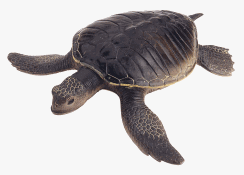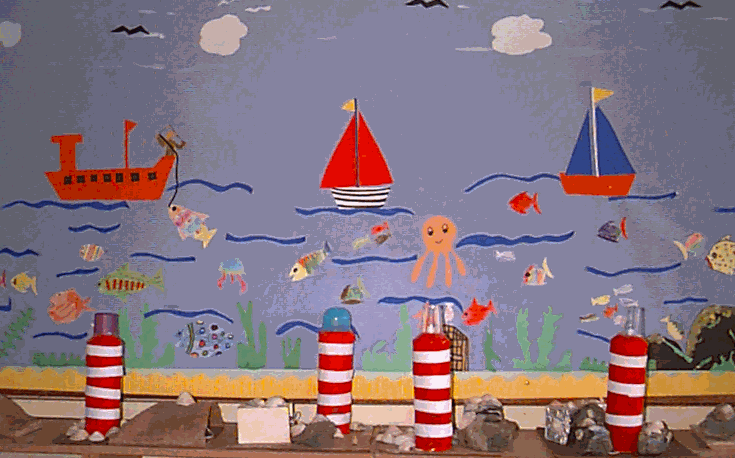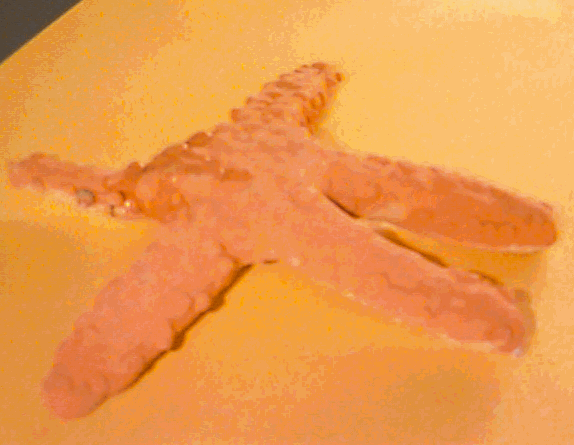Our Sea Project

We all did projects on sea related topics. All our projects are on display in our classroom. We discovered lots of interesting information from these projects.
Interesting facts about the sea.
Mussels have a hairy back and are the most common shellfish they live longer when they are up shore
Cod can be as large as 1m they eat worms, crustaceans, crabs, and oysters. Cod liver oil is rich in vitamins and valuable medicine
Sand Tiger hunts Sharks hunt before being born. They eat each other as embryos until only 2 are left. Great white sharks can live between 25 and 100 years old. There are 5 sets of teeth on the upper jaw. If damaged the tooth will grow back.
Female mackerel can lay up to half a million eggs in one season. Rows of tiny fins are near the tail.
It takes 12 months to produce a young dolphin. It communicates with clicking sounds
The Sea -Gull feeds its young on rabbits, fish, and anything else that it can hunt for. Two ringed birds in Ireland were found in France and Portugal. Turtles are very slow on sand but they move swiftly in the sea. When Tortoises are frightened it pulls its legs and head inside its shell.
Octopus are unique they have 8 legs but no bones.
Whales have no sense of smell but excellent hearing. It can hold its breath for over 4 hours. It is the biggest mammal in the world. The blue whale is 31 metres long
Turtles are very slow on sand but they move swiftly in the sea. When Tortoises are frightened it pulls its legs and head inside its shell.
Octopus are unique they have 8 legs but no bones.
Whales have no sense of smell but excellent hearing. It can hold its breath for over 4 hours. It is the biggest mammal in the world. The blue whale is 31 metres long
 The female sea horse lays the eggs but the male stores them in their pouches. They swim upright and can look like see weed in the sea.
Seals spend most of their time in the water but give birth on the land. It has a bubblier which uses it to keep it warm and for energy
Angelfish are found in the Amazon River in Brazil. It has stripes, which act as camouflage. It is kept as a tropical fish in tanks
The Nile crocodile has killed more people on the African Continent than any other animal. Alligators used to be hunted for their skin. Chinese alligators eat mainly turtles
Starfish can re-grow limbs. They have thousands of feet but only 5 arms.
The female sea horse lays the eggs but the male stores them in their pouches. They swim upright and can look like see weed in the sea.
Seals spend most of their time in the water but give birth on the land. It has a bubblier which uses it to keep it warm and for energy
Angelfish are found in the Amazon River in Brazil. It has stripes, which act as camouflage. It is kept as a tropical fish in tanks
The Nile crocodile has killed more people on the African Continent than any other animal. Alligators used to be hunted for their skin. Chinese alligators eat mainly turtles
Starfish can re-grow limbs. They have thousands of feet but only 5 arms.
 Lobster usually fished with baited pots. It can lay 7000-100,000 eggs. It is solitary and nocturnal. I.e. it hunts alone at night.
Crab Common shore crab is the most common animal on the seashore. The shell does not grow and is cast off as the crab's body grows.
Lobster usually fished with baited pots. It can lay 7000-100,000 eggs. It is solitary and nocturnal. I.e. it hunts alone at night.
Crab Common shore crab is the most common animal on the seashore. The shell does not grow and is cast off as the crab's body grows.
Did you know??????
John Smeaton built the first modern lighthouse in 1759 on the Eddystone Rocks in England.
The world's first lighthouse was built around 285BC on the island of Pharos in Egypt. A fire burned at thee top to mark the harbour entrance.
We built lighthouses in school. We made them with washing up liquid bottles and plastic tops. We had batteries, bulbs and made switches with paper clips. They looked lovely.

Darren made this starfish with clay.


Our School Tour
We went on our school tour to Skerries, Co. Dublin. First we went swimming. We made sandcastles. We climbed rocks. We ate our picnic. We saw a diver. We collected shells. We saw a lighthouse and three islands.
We found a jellyfish & crabs.
After two hours we walked to the harbour. At the harbour we saw lobster pots, nets, buoys, and fishing boats.
Kenneth a fisherman told us about life as a fisherman. He works on one of four prawn boats. The boat is seventy foot long. He works out at sea from Monday to Friday. He showed us the nets they use to catch prawns. The nets trail along behind the boat.
He showed us
- prawns (Dublin Bay of Course!)
- monkfish
- cod
- haddock
- squid
- octopus
- plaice
- starfish
It was very interesting to talk to a real fisherman.
We enjoyed our day.
Homepage
![]()

 The female sea horse lays the eggs but the male stores them in their pouches. They swim upright and can look like see weed in the sea.
The female sea horse lays the eggs but the male stores them in their pouches. They swim upright and can look like see weed in the sea. Lobster usually fished with baited pots. It can lay 7000-100,000 eggs. It is solitary and nocturnal. I.e. it hunts alone at night.
Lobster usually fished with baited pots. It can lay 7000-100,000 eggs. It is solitary and nocturnal. I.e. it hunts alone at night.

![]()